#Japanese tea ceremony
Photo

服の茶で、心の深呼吸をしましょう。
With a cup of tea, let us take a deep breath for the soul.
86 notes
·
View notes
Text




Gunshi Kanbei / Strategist Kanbei (Ep 15)
#gunshi kanbei#strategist kanbei#taiga drama#period drama#historical drama#japanese drama#j drama#jdrama#dorama#japan#japanese culture#japanese tea ceremony#oda nobunaga
5 notes
·
View notes
Text
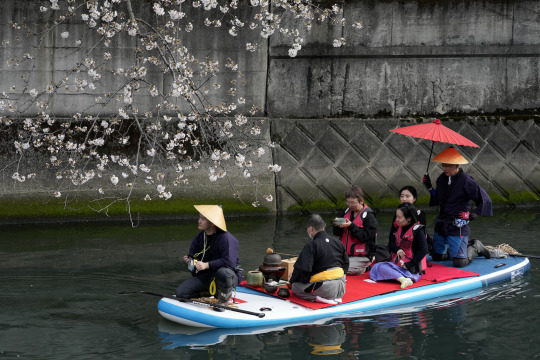
Image: AP/Shuji Kajiyama
Picture of the day
Tea ceremony
Apr. 7
People on a boat enjoy a Japanese tea ceremony 0n a river in Yokohama on Saturday.
2 notes
·
View notes
Text
I know it's been 30 years, sry, but I'm back for a bit. I'm finishing up a Japanese culture course at Uni and when it's fully over (I don't want to be accused of plagiarizing some weird Tumblr so I'm waiting lol) I'll post the culture pieces I wrote, and I'll link the ones that have online resources and whatnot. So in like a week and a half to two weeks keep ur eyes peeled 👍
#Japanese culture#japanese calligraphy#Japanese tea ceremony#Chado#Edo art#Japanese art#Japanese language#Evolution#history#?#Do people even still use tags?
5 notes
·
View notes
Photo
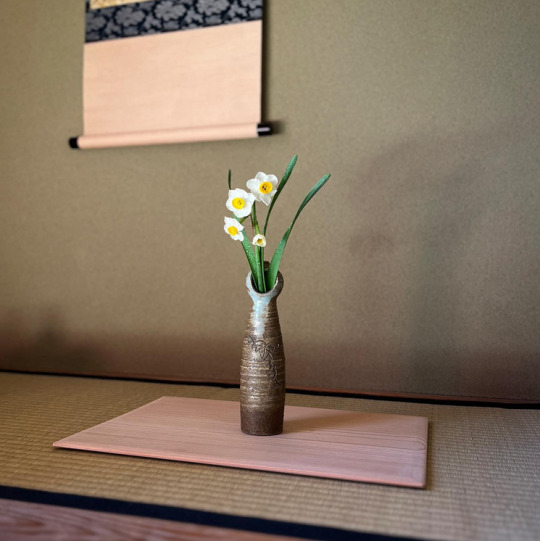
Winter Chabana Displayed in Japanese-Style Reception Room
#Japanese Home#Chabana#茶花#Daffodils#Flower Arrangement#Narcissus Tazetta#水仙#Suisen#Japanese Tea Ceremony#Tokonoma#床の間#Reception Room#Winter#Narcissus
4 notes
·
View notes
Text
Koicha tea procedure
New item:

Shelf: 791 URA ENG/3
Koicha tea procedure : furo koicha temae, ro koicha temae, knowledge for guests.
by Sōshitsu Sen XVI ; [English translation Gretchen Mittwer and Michael Hardy ; photographs Masaki Miyano]. Shohan.
Kyoto : Tankosha Publishing, 2019.
ISBN: 9784473042903
131 pages : colour illustrations ; 26 cm.
(Urasenke tea procedure guidebook ; 3).
This book is a translation of the Japanese guidebook "Urasenke chadō temae kyōsoku 3" authored by Sōshitsu Sen XVI and published by Tankosha Publishing Co., Ltd. on November 29, 2010.
Translated into English from the Japanese. This English-language guidebook necessarily includes a large number of Japanese terms, for there are so many terms used in chadō which do not have English counterparts; among them, some of the most basic and common terms. Concerning the italicization of Japanese terms in this book, the most basic chadō terms are treated as English loan words, and therefore are not italicized. In most cases, Japanese terms are defined in parentheses on first appearance. Also, a glossary of most of the terms is provided at the back.
0 notes
Text
Jikan no Mukou,or The Other Side of Time: Tales for a Time Being and other Ghostly Experiences in Chinese and Japanese Literature. jikan no mukou,
Tales for a Time Being is a captivating and poignant novel written by Ruth Ozeki. The book has been praised for its intricate plot, vivid characters, and insightful commentary on cultural themes. In this review, I will explore the cultural elements, hidden motifs, and zeitgeist of the book while also drawing comparisons to Japanese and Chinese ghost stories from the 16th and 17th centuries.
The…

View On WordPress
#Anime and manga#banana yoshimoto#Contemporary Japanese literature#Geisha culture#Ghost stories in Japanese literature#haruki murakami#Japanese architecture#Japanese calligraphy#Japanese ceramics#Japanese cuisine#japanese culture#Japanese fashion#japanese folklore#japanese gardens#japanese history#japanese literature#japanese mythology#Japanese philosophy#Japanese pop culture#Japanese tea ceremony#Japanese traditional music#Kabuki theater#Kawaii culture#Noh theater#Sake#Samurai culture#shintoism#Tokyo fashion#Yoko Ogawa#Zen Buddhism
1 note
·
View note
Text

Woman Performing the Tea Ceremony, Kikukawa Eizan, 1815
#art#art history#Kikukawa Eizan#Asian art#Japan#Japanese art#East Asia#East Asian art#woodblock print#ukiyo-e#surimono#genre art#tea ceremony#Edo period#19th century art#Cleveland Museum of Art
261 notes
·
View notes
Text

Friday the 13th, the perfect day for a tea party
Fridays the 13th is not a bad omen. It is the perfect day for especially the psychics to have a tea party. Have a fun laughter with some friends. Remember, it’s tea not alcoholic drink.

13日の金曜日はお茶会にうってつけの日
皆さま、13日の金曜日は縁起の悪い日ではありません。特にサイキックの人たちにとっては、お茶話会を開くのにはベストな日なのです。お友達を招いて、笑いやお喋りで、楽しく盛り上がりましょう!お酒は禁物です、お茶です。
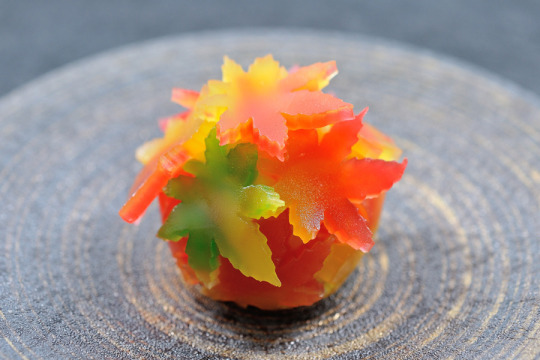
#friday the 13th#tea party#tea ceremony#laughter#nature#art#spiritual life#matcha#japanese sweets#wagashi
211 notes
·
View notes
Text

Today I'm feeling very thankful for my teajourney, that it led me to so many cool people, that I found a new passion in the pretty boring life I led, and that I can keep learning something new.
Tea is a very cool thing, not only is it a tasty treat, but it can also improve ones health and wellbeing. You can use it as your meditation, your ritual, powerbooster, etc.
Whether you enjoy pouring its sweet drops onto a teapet with gratitude or you'd rather save every bit to yourself, doesn't matter, ceremony is yours and only yours to enjoy.
I think tea is one of those things that taught me to be grateful for the little things in life, and kind of stay in the moment,
and for that I'm grateful.
#tea#tea brewing#tea ceremony#tea infuser#tea lover#tea tasting#tea time#gong fu cha#gongfu tea#ťumblr#ťumbľr#gongfuchablr#chinese tea#japanese tea#white tea#green tea#oolong tea#black tea#puerh tea#tea collection#tea ceramics#tea cup#tea culture
26 notes
·
View notes
Text


Unique plate made from natural HOBA leaves in Takayama Gifu Prefecture.
It is hard / strong enough to use.
+SHOP+
23 notes
·
View notes
Text



Shinzanmono / The Newcomer (Ep 1)
#shinzanmono#the newcomer#abe hiroshi#hiroshi abe#kuroki meisa#meisa kuroki#mizobata junpei#junpei mizobata#japanese drama#j drama#jdrama#dorama#japan#asian drama#japanese tea ceremony#japanese culture
4 notes
·
View notes
Text
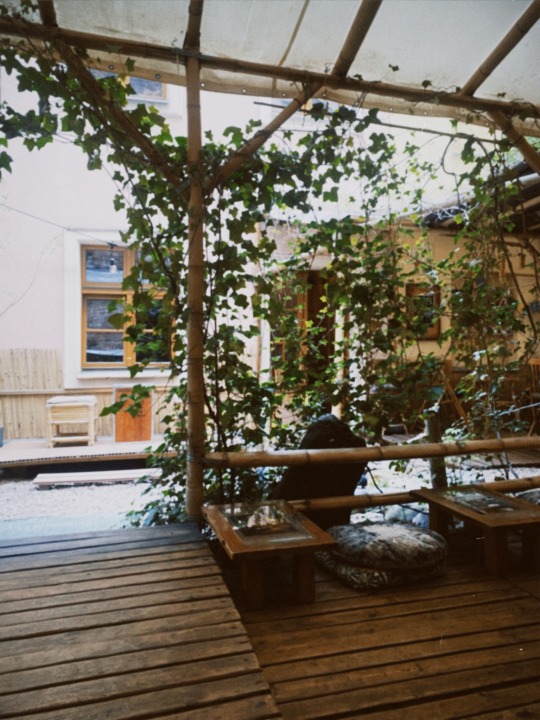

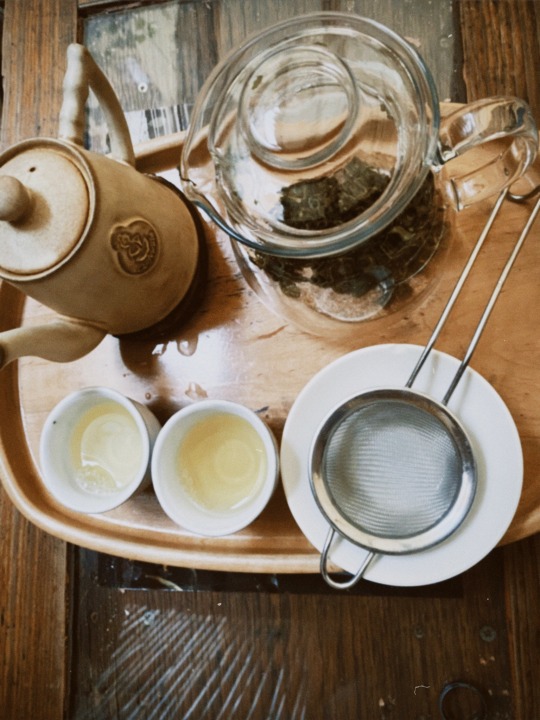

tea ceremony house 🍵
IG: liberaureum
#tea ceremony#japanese tea#chinese tea#tea aesthetic#teaculture#tea time#teahouse#dark acadamia aesthetic#dark academia#aesthetic#beige aesthetic#bookish#cameras#sculpture#painting#photography#art
78 notes
·
View notes
Text
Sadou
The way of tea~
A brief description of the Japanese tea ceremony.
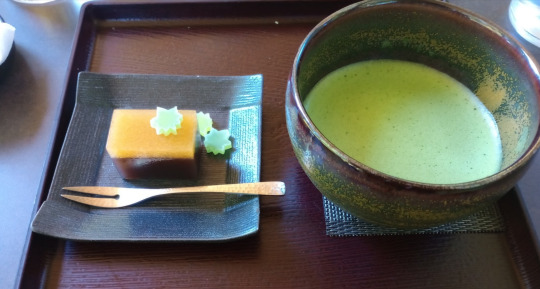
Matcha green tea was brought over to Japan from china. From there it was used by the Shogun and samurai and then eventually planted and spread even amongst the common populace. Then eventually internationally, making Japan the green tea capital of the world.
The tea ceremony begins in the zashiki, or the sitting room, with the hostess cleaning the tea ceremony utensils with a combination of a cloth brought for this specific purpose, and some of the boiling water from the kettle. (Typically not an electric kettle, but rather a large cast iron or ceramic brazier and kettle.) This is not done because the dishes are dirty in any way, but rather as a spiritual practice for the sake of purity. Similarly to the way a person would cleanse their hands and mouth at the outdoor basin before entering a temple, shrine, or in some cases an ochaya. A teahouse or tea shop. While the hostess is doing this, and preparing the sweets, the guests are meant to take that time to observe the Tokonoma. The Tokonoma is a small inlet, or section of the room, where a display is placed. The art displayed in the tokonoma primarily consists of a calligraphy scroll, and chabana, a seasonal flower arrangement setup for the tea ceremony. The two pieces are meant to reflect a similar theme related to the ceremony. One such example would be the phrase Ichigo ichie, meaning basically that you only experience each experience once or you only live once, so cherish each moment as it passes by.
Once the hostess is done with their preparation, and the guests are done admiring the art, the sweets are passed on to the guest, and the tea portion of the ceremony begins. The sweets served are known as wagashi. There are three types of wagashi that I know of. One is youkan, a sort of gelatinous type sweet made from red bean paste. Higashi, dryer more cookie or powdery type wagashi. Then there is the stuffed mochi type wagashi. All of which come in many unique shapes and styles, typically involve red bean paste, and oftentimes rely on other seasonal flavorings. These are meant to be eaten before consuming the tea. Once done and the time to drink the tea has come, there is a certain level of ceremonial practice that must be followed once the tea is received, but before it can be drunk. The level of which will vary depending on the level of formality of the event, but overall the steps are generally the same. The hostess will pass the tea by placing it on the tatami mat, the guest will receive it, bow to the hostess, and bow to the other nearest guests in attendance. Then the guest will lift the teacup again with their right hand, rotate it a bit, sip the tea periodically until it is finished, and then wipe the place they drank from before bowing once more to the hostess. Then once again the guests should take a moment to reflect on their experience,or observe art that is the ceramic bowl the tea was served in. While there are more accurate answers which may be more correct in how to do this, such as how far you rotate the cup, or the order in which or number of times you bow, I do not personally know the specifics, and from my understanding they do vary based on formality and which institution one learns from. But basically to attend a Japanese tea ceremony all you need is the desire to try, a little bit of patience for us Americans who are typically in a hurry, and respect both for the culture and ceremony taking place.
Some unspoken rules about the tea ceremony are that those guests in attendance should typically not wear overly smelly perfumes or scents. They should not wear clothes that will disturb the ceremony by being overly gaudy or catching on the tatami mat. Going hand and hand with this they should also wear shoes that are easily removable as they cannot be worn on the tatami mat where the ceremony is held. No smoking, and avoid wearing heavy make-up specifically on your mouth so as to avoid getting lipstick all over the cups.
Words of interest (not explained in text):
Sadou: the way of tea. Some places also pronounce it chadou, but sadou is more correct/common.
Chadogu: tea tools
0 notes
Text

Ayano 綾野, Toyotomi Hideyoshi 豊臣 秀吉 (date Unknown, Taisho or early Showa)
This informal painted scroll depicts Toyotomi Hideyoshi (1537–1598) late in his life, dressed in luxurious garments, seated cross-legged in a room in Fushimi Castle Kyoto. In his right hand, he holds a tea bowl, before some food. In his left hand, he holds a katana sword. The saya is beside him. He appears to be straining to hear something to his right. Five other swords surround him. He was a great man who had become a paranoid tyrant.
#Ayano 綾野#Toyotomi Hideyoshi#Taisho Painting#Showa Painting#Japanese Art#Portrait#Kyoto#Samurai#Swords#Katana#Wakizashi#Tanto#Kimono#Tea#Tea Ceremony#Fushimi Castle#Shogun
8 notes
·
View notes
Text
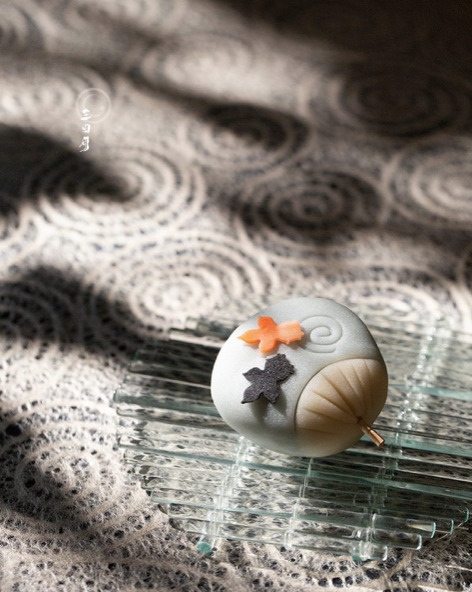
mikazukiwagashi
79 notes
·
View notes